DIYers tend to accumulate all kinds of tools for all kinds of projects. The key to staying efficient, though, is to make sure you always have the right tools at hand. Check out these ideas to make sure you keep your tools organized!

21 Tool Storage Tips and Tricks That’ll Transform Your Space

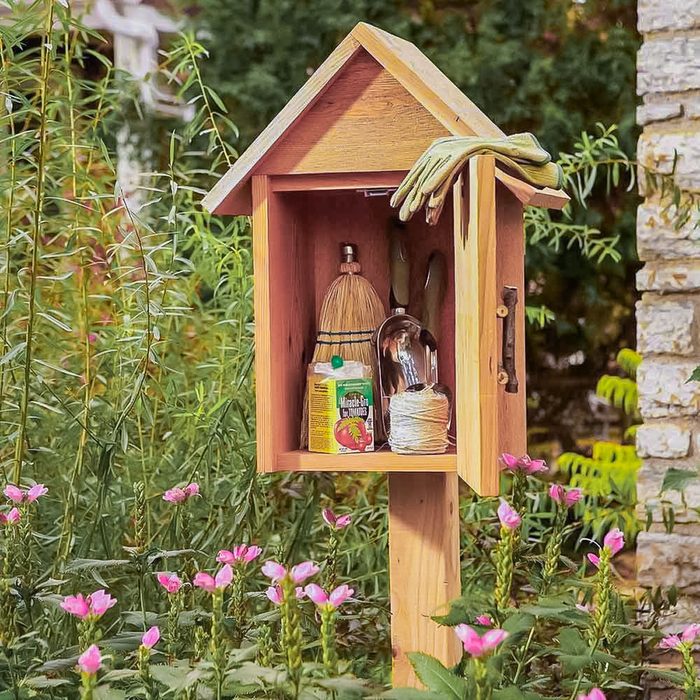
Garden Tool Storage Cubby
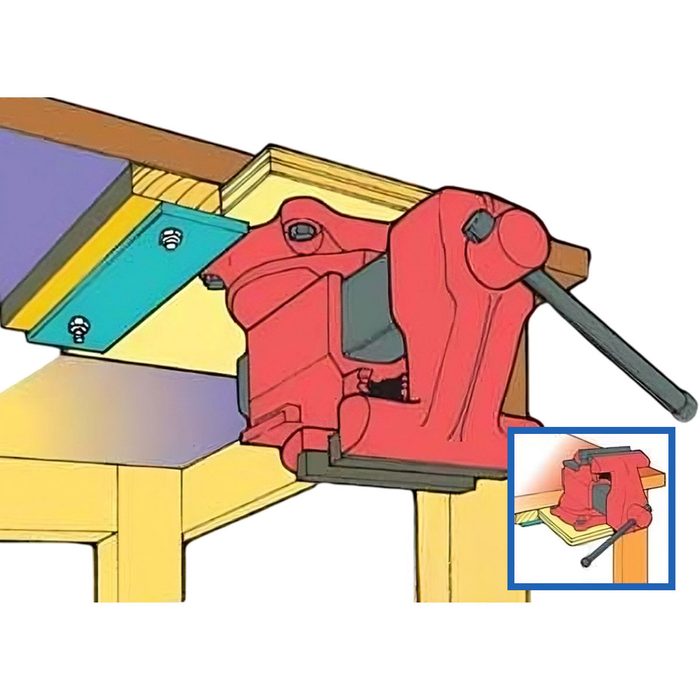
Bench-Top Storage
Looking for a smart way to keep a vise or small bench-top tool right at your fingertips without cluttering your workbench? Build this slide-in base and mount the vise or tool on it so the entire unit can slide back in, upside down, and out of the way. Countersink holes are placed under the base so you can recess the mounting nuts and washers.
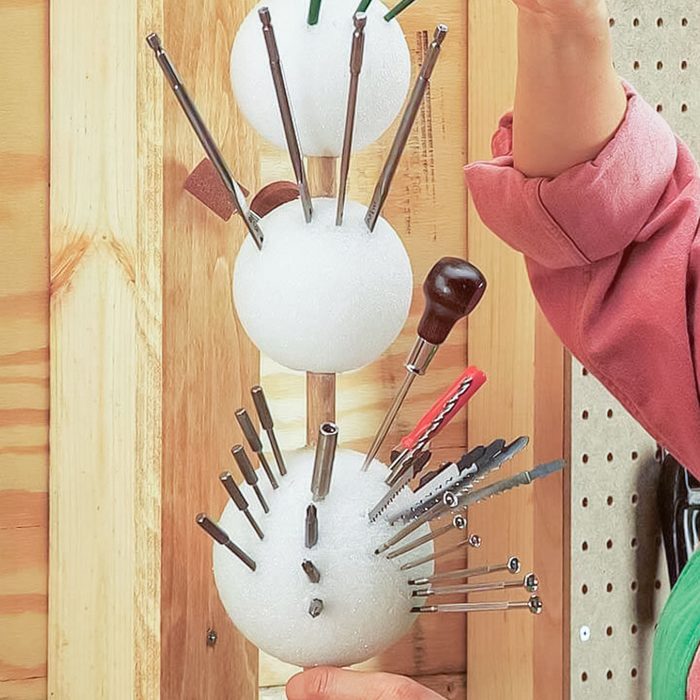
Foam Ball for Sharp Tools
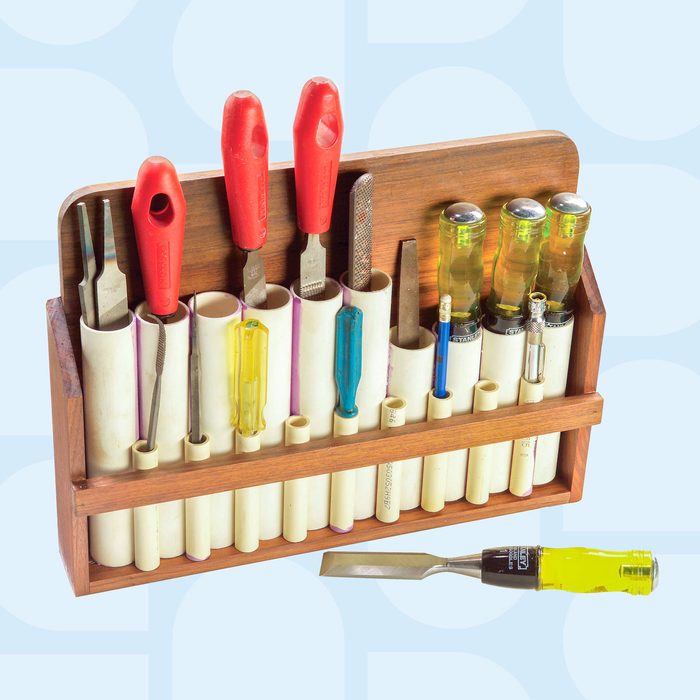
Panpipe
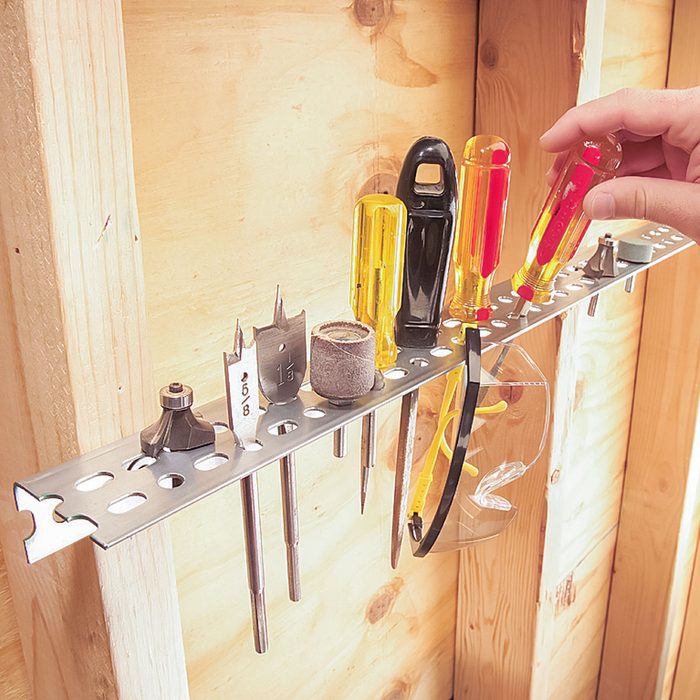
New Angle on Small Tool Storage
Find a bare spot on a wall or workbench and screw on a 2-ft. piece of 2-in.-wide, slotted angle iron available at home centers. It’s the perfect hangout for screwdrivers, bits, safety glasses and sanding drums.
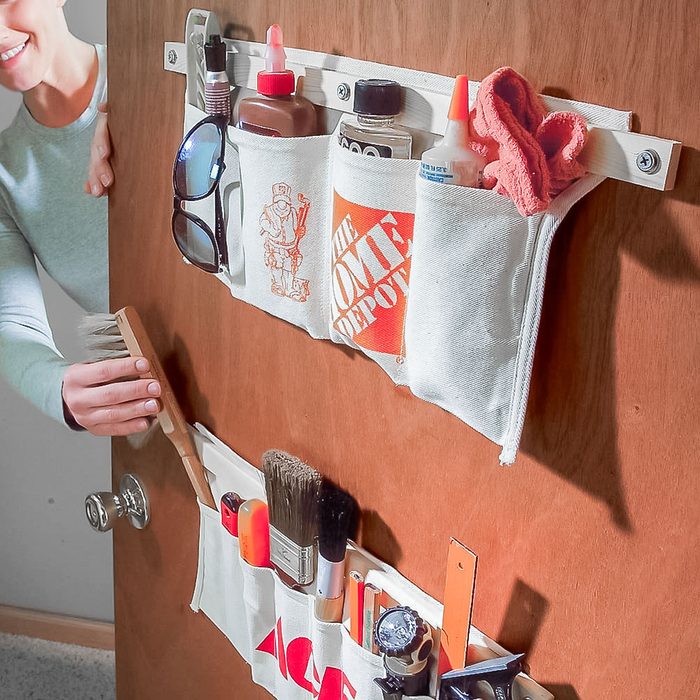
Behind the Door Storage

Long-Handled Tool Rack
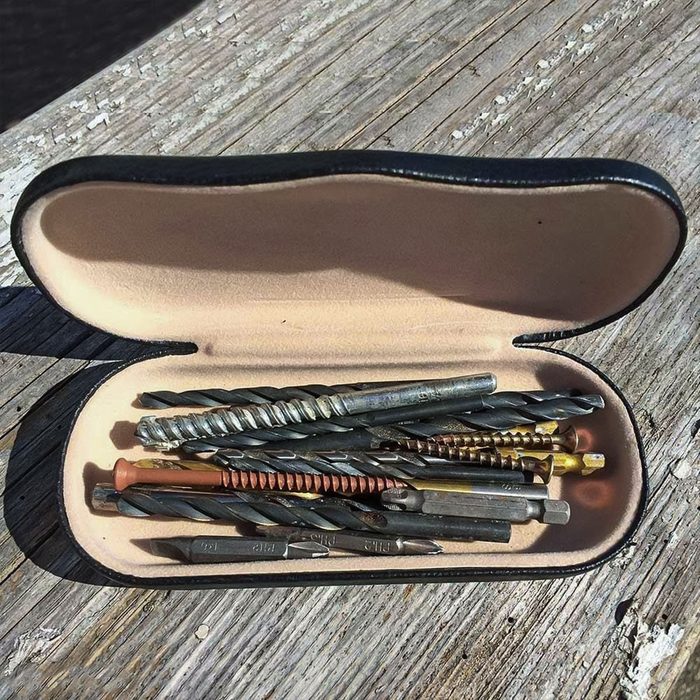
Eyeglass-case Hardware Holder
“My wife has a drawer full of old eyeglass cases that she doesn’t use anymore, so I repurposed them to store small things like drill bits and screws. I stick a case in my shirt pocket when I’m working and toss it into a toolbox when I’m done. It’s much easier than digging around for small stuff in the bottom of my tool apron.”- Norm Smith

Toolbox Liner
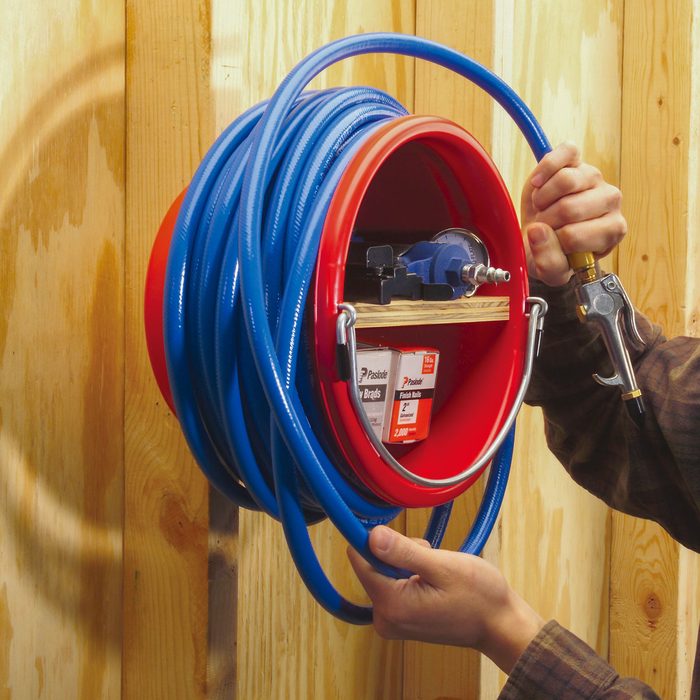
Air Tool Station
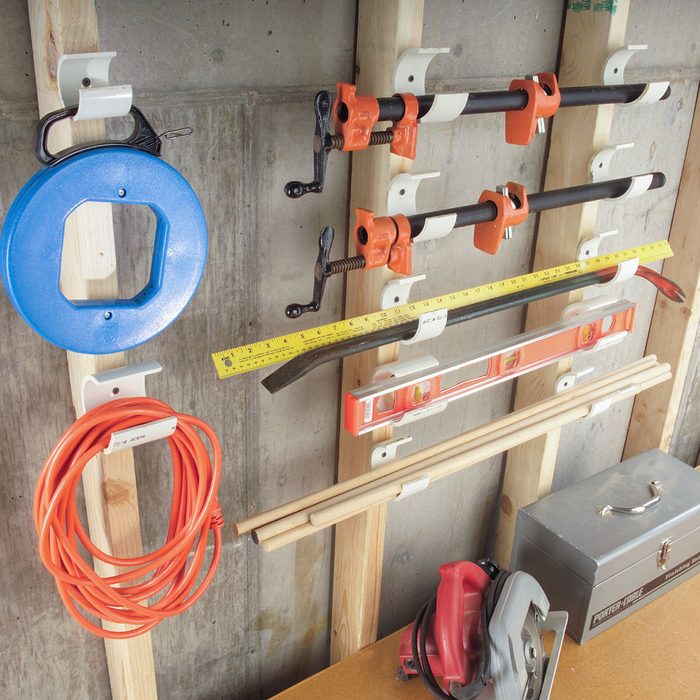
PVC Storage Hangers

Tool Tote
Keep all your hand tools within easy reach in a portable 16-in. pine carton. Build one from a 1×8 x 12-ft. pine board, 1/4-in. plywood and a 3/4-in. oak dowel, and you’ll never run back to the garage for a bit, blade, wrench or nail. Here’s how:
- Cut and screw together the sides and ends, with the ends protruding 1 in. beyond the sides. Drill holes in the top of the ends for a 3/4-in. dowel handle and tap it in the holes before assembling the ends and sides. Drill the 3/8-in. storage holes in the top edges of the sides before assembly.
- Saw 1/4-in. x 1-1/2-in. pine strips for the side slats and screw them to the protruding ends.
- Cut and screw on the 1/4-in. plywood floor.
- Cut 3/8-in. pine partitions and screw them behind the side slats to create custom-width pockets for the tools.
That’s it—load it up and tote your tools with just one hand!
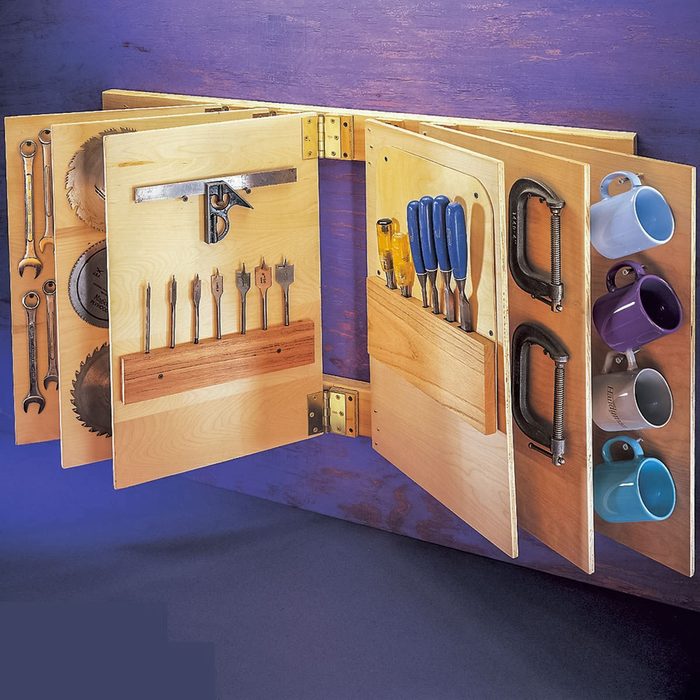
Flip-Through Storage Rack
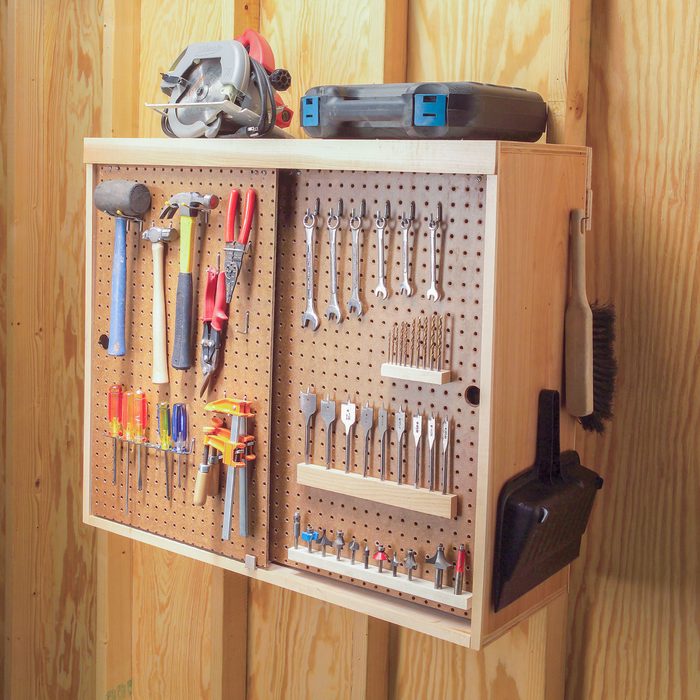
On-a-Roll Pegboard Doors
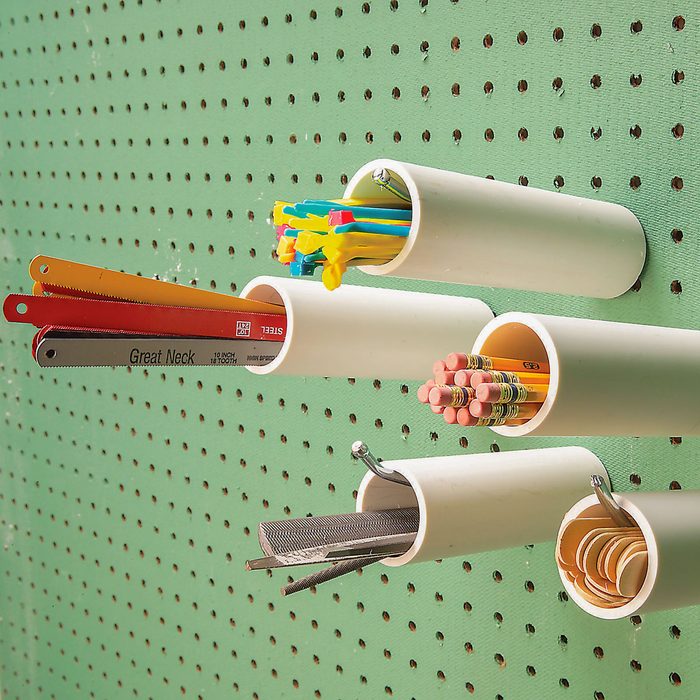
Pegboard Cubbyholes
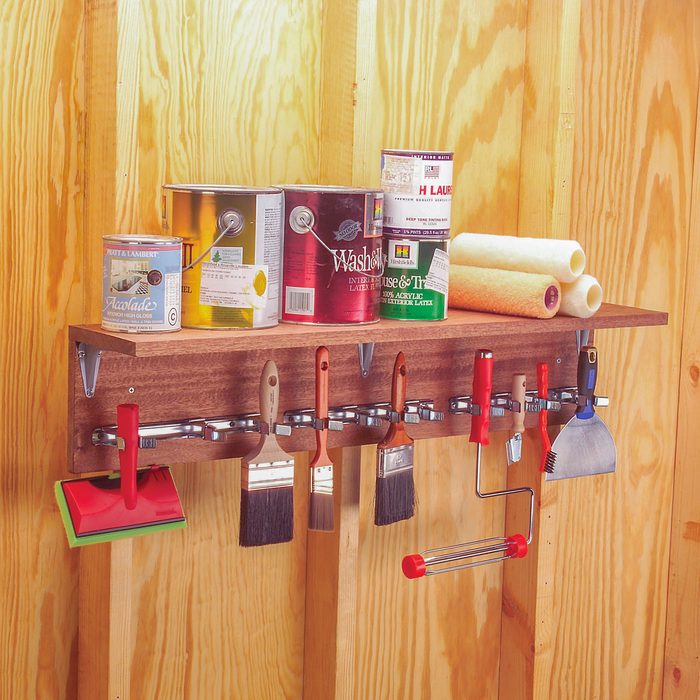
Painting Gear Hangout
Organize your paint brushes, scrapers, roller frames, rags and paint cans with this shelf made from two 1×8 boards screwed together and reinforced with metal shelf brackets. We built ours 38 inches long to fit three brackets of sliding spring grips that we mounted under the shelf for tool storage. Build and attach this shelf to a shop or basement wall, and you’ll enforce orderly storage on all your far-flung painting paraphernalia.

Space-Saving Sliding Shelves
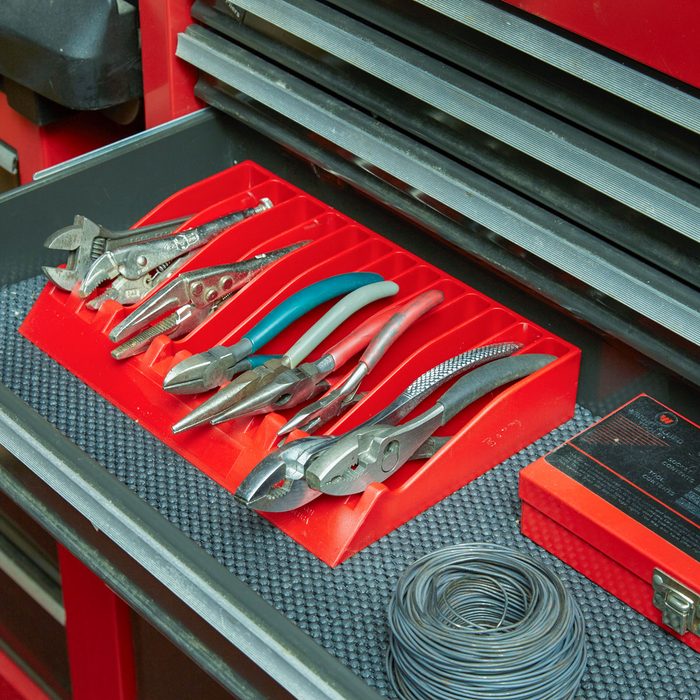
Pliers and Wrench Rack
Drop this nifty rack in a deep tool chest drawer and fit more pliers and wrenches in less space by storing them on their side. The Lisle No. 404090 storage rack holds up to 13 tools and has two different size slots. You can also build your own with custom measurements if you prefer.
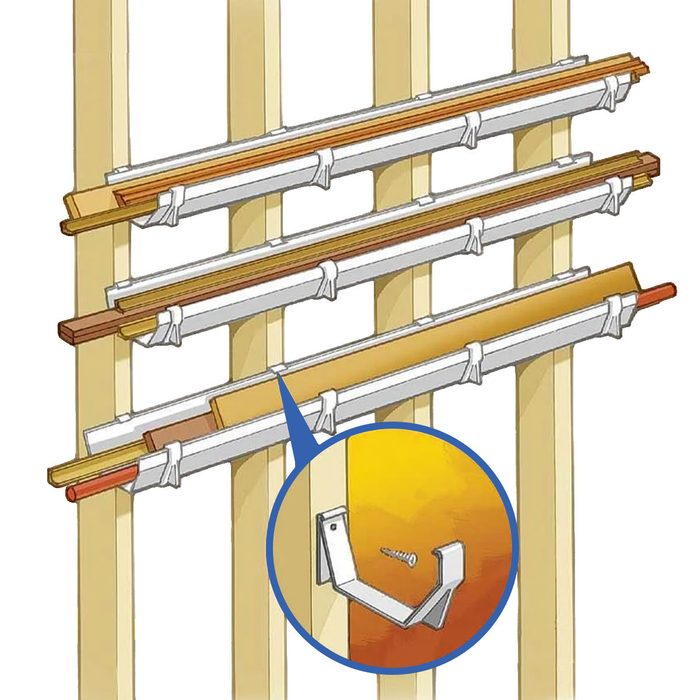
Gutter Shelving
Vinyl rain gutters make great storage shelves for long, thin items such as molding, light lumber, pipe and certain tools. Simply screw the wraparound support bracket to each stud and snap the gutter in place.
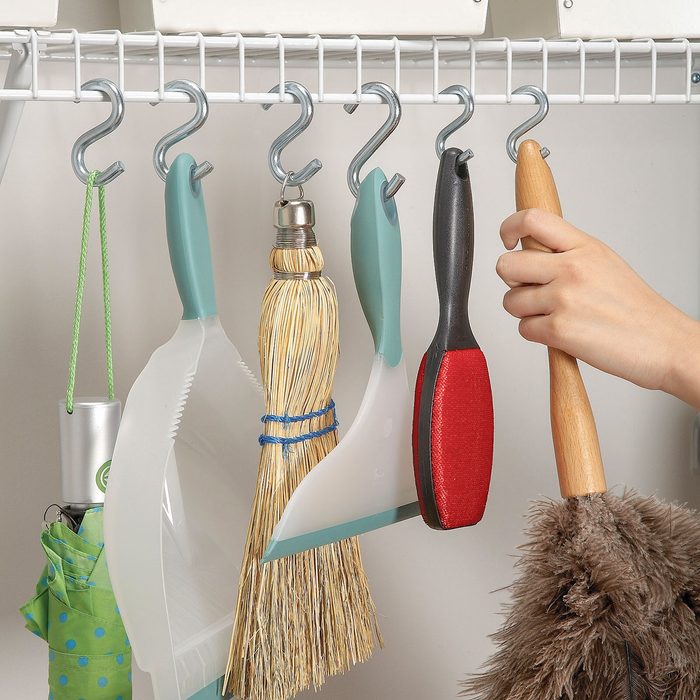
S-Hook Hang-Up
Add S-hooks to wire shelving to turn any closet into a useful hang-up storage space. This provides tidy storage for mops, brooms and other cleaning tools.

New Uses for Old Glove Fingers
FAQ
What are the most essential tools for a DIYer to own?
“The most simple essential tools that all DIYers should have are: a quality cordless drill, a reliable tape measure (trust me, cheap ones are not worth it!), a level, a great set of screwdrivers, an adjustable wrench, hammer, and a utility knife,” says tool expert Michael Feazel, “For most home base projects, that should cover what you need for any jobs that don’t require an expert. Stud finders, pliers, and a circular saw are all very helpful as well.”
Is labeling tool storage necessary?
“Labeling tool storage isn’t absolutely necessary, but it can make a big difference—especially as your collection grows. Clear labels help save time, prevents misplacing tools, and keeps your workspace more efficient. For shared or busy garages, labeling is even more helpful so everyone knows where tools go,” says Feazel.
About the Expert
- Michael Feazel is a tool, roofing and construction expert with over 30 years of experience. He is the Co-Founder and CEO of Roof Maxx, a groundbreaking green technology company revolutionizing roofing sustainability. Michael also co-founded Roofers Success International and built one of the nation’s leading roofing companies before launching Roof Maxx in 2017.



















